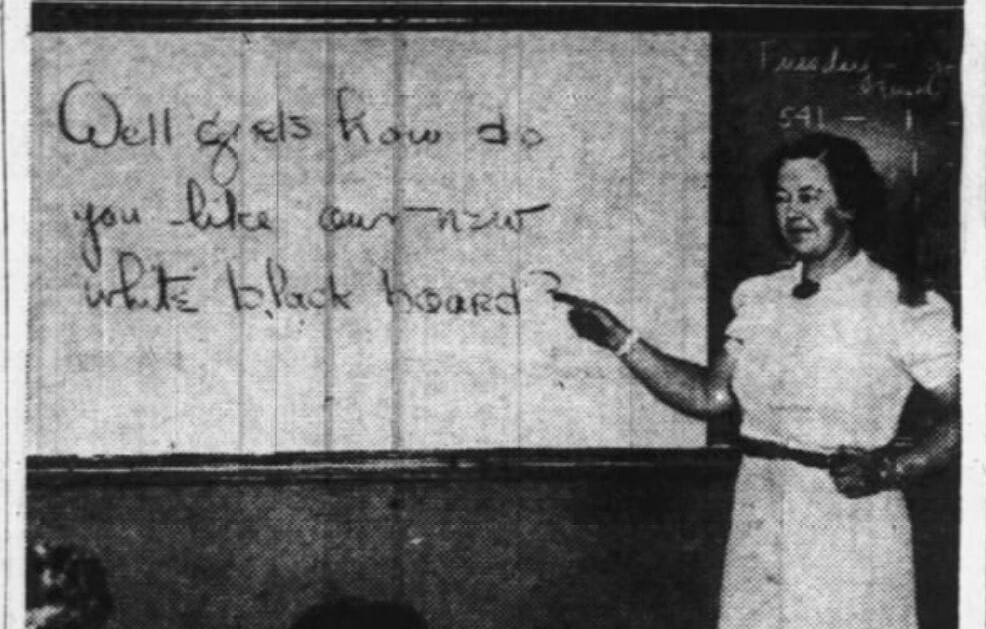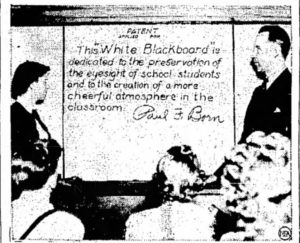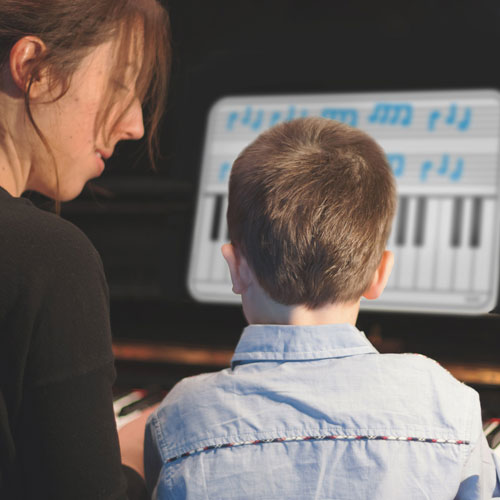
The whiteboard is a common sight in classrooms in this day and age, but have you ever stopped to think about how the dry erase board came to be? Let us guide you through the creation of the whiteboard.
Who Created the Whiteboard?
The whiteboard was invented in the mid-1950s but the original inventor is one of two possible individuals. Most believe that Martin Heit, a Korean War veteran, created the whiteboard in the 1950s by fixing a mistake. Heit, a photographer, found himself working with negatives daily. One day he found that a permanent marker had been marked on one of the negatives and Heit found himself surprised when the marker had wiped away from the film easily. This gave him the idea for what would now be known as the whiteboard. Martin Heit produced a whiteboard prototype made with laminates similar to those found on photographs and films,  allowing for the ability to erase writing. Heit was supposed to debut his new invention at a trade show, but those hopes were dashed when the prototype unexpectedly caught fire. Instead of starting over, Heit sold his design and idea to a company.
allowing for the ability to erase writing. Heit was supposed to debut his new invention at a trade show, but those hopes were dashed when the prototype unexpectedly caught fire. Instead of starting over, Heit sold his design and idea to a company.
Others believe that Albert Stallion was the creator of the whiteboards we know today. In the mid-1950s to early 1960s, Albert Stallion, a U.K. native working for the American steel company Alliance, came across the idea of whiteboards. Stallion believed that he could create an elevated writing surface by combining aluminum and steel. Enameled steel is highly scratch-resistant and possesses rugged durability that Stallion thought could serve as an alternative to the standard blackboard. During an Alliance board meeting, Stallion decided to pitch his idea to the writing board community. He was laughed at during the meeting, leading him to abandon his idea and pursue another business.
Whiteboards Hit the Market
Despite the whiteboard being created in the 1950s to 1960s, it did not become commonplace in retail settings until almost a decade later. The first commercial whiteboard on the market was designed to be stationed next to home telephones, allowing for the quick writing down of notes.
stationed next to home telephones, allowing for the quick writing down of notes.
Early whiteboards were marketed as alternatives to the standard blackboard but did not find themselves significantly easier to clean. Both boards still required a wet cloth to clean off the writing utensils. It was not until 1975 that scientist Jerry Woolfe created a non-toxic type of dry erase ink that allowed whiteboards to be erased without a wet cloth. Even after this development, it still wasn't until the 1980s, when the dry-erase marker hit the market, that the whiteboard took off in popularity—the 1990s when Whiteboards had officially overturned blackboards as the primary classroom staple.
In 1987, OptiMA Inc. entered the playing field, starting out as a local business to business company before venturing into the world of e-commerce in 2000. In 2001, OptiMA Inc. created a website called MyWhiteBoards.com, and in 2007, OptiMA Graphics was created as a division of OptiMA Inc. OptiMA Graphics creates custom-printed dry erase boards in-house and offers them on their website PrintedDryErase.com. With over 35 years of experience and creation, we've built our success by treating our customers well and knowing our products inside and out. We anticipate customer questions and we are prepared to ensure we meet your every need.
If you have an idea for a custom whiteboard, you can call us at 866-366-1500, or you can head to our website to learn more about our products!
Why Choose OptiMA?
We are a small business whose products are made in the U.S.A. We specialize in dry erase boards, dry erase wallcoverings, portable dry erase units, high-quality custom printed whiteboards, fast shipping, and five-star customer service. Over the last three decades, we've worked hard to deliver industrial quality whiteboard solutions that won't break customers' budgets.





